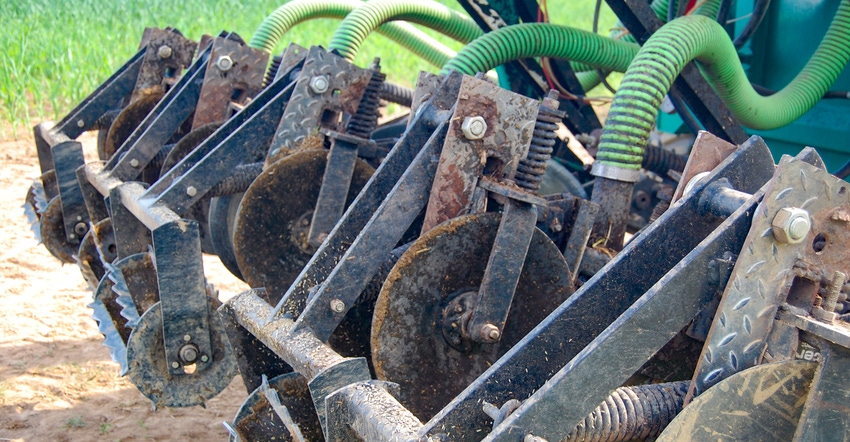February 12, 2019

Widespread adoption of injecting manure could be crucial to restoring Chesapeake Bay water quality, according to researchers who compared phosphorus runoff from fields treated by injection and surface application.
However, they predict it will be difficult to persuade farmers to change practices.
In a four-year study, overland and subsurface flows from 12 hydrologically isolated research plots at Penn State's Russell E. Larson Agricultural Research Center were measured and sampled for all phosphorus constituents and total solids during and after precipitation events. During that period, from January 2013 to May 2017, the plots were planted with summer crops of corn and winter cover crops of cereal rye. Half the plots received broadcast manure applications while the others had manure injected into the soil.
Researchers evaluated loads of total phosphorus, dissolved phosphorus, particulate phosphorus and total solids against flow volumes to learn how phosphorus and sediment losses differed between plots.
Shallow-disk injection was found to be more effective than broadcasting manure in promoting dilution of dissolved phosphorus and, to a lesser extent, total phosphorus. The broadcast manure plots experienced more runoff of particulate phosphorus than did the injection plots.
Importantly for no-till advocates, there was no difference detected between application methods for total solids in the runoff — meaning manure injection, with its slight disturbance of the soil surface, did not cause sedimentation. No-till farmers have been slow to adopt manure injection due to concerns about the practice causing sedimentation and muddying streams.
Not a precise study
However, the precision and accuracy of the study, recently published in Agriculture, Ecosystems and Environment, was constrained by hydrologic variability, says Jack Watson, professor of soil science and soil physics at Penn State, whose research group conducted the study.
"This has been the case with previous phosphorus-mitigation field studies as well," he says. "Even studies done with carefully constructed research plots like ours, which allow us to collect, measure, test and contrast runoff, are confounded by hydrologic variability."
Despite the variability, the findings showed that manure injection decreased overall phosphorus losses, according to lead researcher Melissa Miller, a master's degree student in soil science.
"When we looked at the total phosphorus losses from the plots, we were able to see a strong trend," she says. "It was revealed in both overland and subsurface flows following rain events.”
That variability, though, complicates efforts to convince dairy farmers that they should convert to manure injection, according to team member Heather Gall, assistant professor of agricultural and biological engineering.
"When we make recommendations to farmers about what they can do to improve runoff quality, we want to be able to tell them how well it will work," she says. "But how much manure injection will reduce the amount of phosphorus loss on a particular farm can depend on site characteristics, such as what kind of soil it has, what kind of crops are growing and the slope of the landscape. And so we might not be able to tell a farmer definitively what to expect in terms of load-reduction benefits, making it difficult to make a compelling case that an investment in shallow-disc manure injection equipment will be worthwhile."
Challenges with injection
Watson says that manure injection equipment is expensive, takes longer and requires more fuel for farmers to apply manure than broadcasting or spreading. For shallow-disk manure injection to be broadly implemented across the region, Watson says the government or other sources must provide financial help.
"In the Mid-Atlantic and Northeast regions, we have a lot of dairy animals concentrated in a small area,” he says. “We have all this manure that has to be gotten rid of and all the nutrients that go with it have to be disposed of on a small amount of land. It must be done in a way that will protect the Chesapeake Bay.”
Even if there is uncertainty around phosphorus reductions due to site variability, Watson says there are additional benefits from injection, such as reducing ammonia volatilization and reducing odor emissions, which have significant value, too.
USDA supported this work.
Source: Penn State, which is solely responsible for the information provided and is wholly owned by the source. Informa Business Media and all its subsidiaries are not responsible for any of the content contained in this information asset.
You May Also Like




